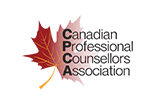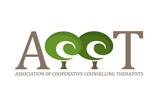A successful life coach career is contingent on the establishment of a trusting and respectful relationship between the coach and their clients (Monroe, 2015). Without trust and rapport between client and life coach, it can be difficult—if not impossible—for coaches to help their clients create and work towards meaningful goals, address derailing behavior, and achieve lasting change.
Continue reading to learn some methods for successfully developing these relationships.
Timely Communication and Flexible Scheduling Can Demonstrate to the Client that they matter.
The specific clients a life coach will interact with will often depend upon their niche or specialization. However, according to a recent study by the International Coaching Federation, 23% of life coaches said the majority of their clients are managers and executives (ICF, 2016, 15).
Professionals working in these roles often work long hours under tight schedules, making their time very important to them. According to a recent survey, “Sixty percent of [executives] who use smartphones for work are connected to work 13.5 or more hours a day ¬five days a week, and spend about ¬five hours on weekends scanning e-mails, for a total of about 72 hours a week connected to work.” (Deal, 2015) For these professionals, a timely response as well as efficient scheduling can help alleviate stress rather than add to it. In turn, this can begin to build a positive relationship even before your first session begins.
Eliminating back and forth emails, quickly following up on enquiries, allowing clients to book appointments online, and offering flexible scheduling options can all help you build an effective relationship with clients during your life coach career.
A Certified Life Coach Is Responsible for Creating a Safe Client Space Free of Judgement
Life Coaches will learn that there are some differences between the coaching and counselling relationships; clients may first seek your services for purely professional assistance, but then gradually over the course of several sessions open up about personal problems that may be affecting them. In fact, according to the Harvard Business Review, only 3% of life coaches are frequently hired to address personal matters, yet 76% of life coaches report addressing personal problems during sessions (Coutu & Kauffman, 2009). Therefore, it is very useful for Life Coaches to have at least the basics of Counselling skills in their tool kit.
The best way to lay the foundation for an effective relationship with your client is to build a safe space in which they can comfortably communicate with you honestly about their needs, challenges, and goals (Monroe, 2015). According to a 2010 study in Coaching: An International Journal of Theory, Research, and Practice, a life coach’s listening skills are of vital importance to creating this environment (O’Broin & Palmer, 2010, p. 130). The study noted that “listening and really understanding the coachee’s situation in order to permit objectivity, and listening in a non-judgmental way were important” (O’Broin & Palmer, 2010, p. 130).
Build Client Trust Co-Operatively With Mirroring Techniques
Another accepted method for building relationships between a professional and client is the use of mirroring. Mirroring techniques involve repeating, in your own words, a sentiment that the client has stated (Schreiner, 2014). When applied to coaching, mirroring techniques can be a great way to build trust while letting your client set the tone and atmosphere of your interactions.
Mirroring posture, tone of voice, phrases, and facial expressions can all help to establish a rapport (Nickels & Everett, 1983, 3). By being mindful of both yours and your client’s body language, you will be in a good position to fully leverage an open and honest channel of communication—a key factor in fruitful coach-client relationships.
Are you ready to help clients begin their journey towards lasting and positive change?
Contact the Rhodes Wellness College to learn how you can become a certified life coach.
Works Cited
Clabby, J., & O’Connor, R. (2004, September). Teaching Learners to Use Mirroring: Rapport Lessons From Neurolinguistic Programming. Family Medicine, 36(8), 541-543.
Coutu, D. & Kauffman, C. (2009). What Can Coaches Do for You? Retrieved September 5, 2017, from https://hbr.org/2009/01/what-can-coaches-do-for-you
Deal, J. (2015). Always On, Never Done? Don’t Blame the Smartphone. Retrieved September 5, 2017, from http://www.ccl.org/wp-content/uploads/2015/04/AlwaysOn.pdf
Hepting, B. (2014, May 08). How to Manage Client Expectations in Coaching. Retrieved September 01, 2017, from https://www.lifecoachhub.com/coaching-articles/how-to-manage-client-expectations-in-coaching
International Coaching Federation. (2016). 2016 ICF Global Coaching Study. 1-21.
Monroe, S. (2015, July 23). 6 Steps to Building Trust with your Clients. Retrieved from http://internationalassociationofwellnessprofessionals.org/6-steps-to-building-trust-with-your-clients/
Nickels, W.G., & R. F. Everett (1983, November). Rapport Building for Salespeople: A Neuro-Linguistic Approach. The Journal of Personal Selling and Sales Management, 3(2), 1-7.
O’Broin, A., & Palmer, S. (2010). Exploring key aspects in the formation of coaching relationships: initial indicators from the perspective of the coachee and the coach. Coaching: An International Journal of Theory, Research and Practice, 3(2), 124-143. doi:10.1080/17521882.2010.502902
Schreiner, M. (2014, May 6). Mirroring. Retrieved September 6, 2017, from https://evolutioncounseling.com/mirroring/
Wiedner, S. (2015, August 11). How to Follow Up With Prospective Coaching Clients. Retrieved September 01, 2017, from http://www.noomii.com/coach-blog/how-to-follow-up-prospective-coaching-clients










